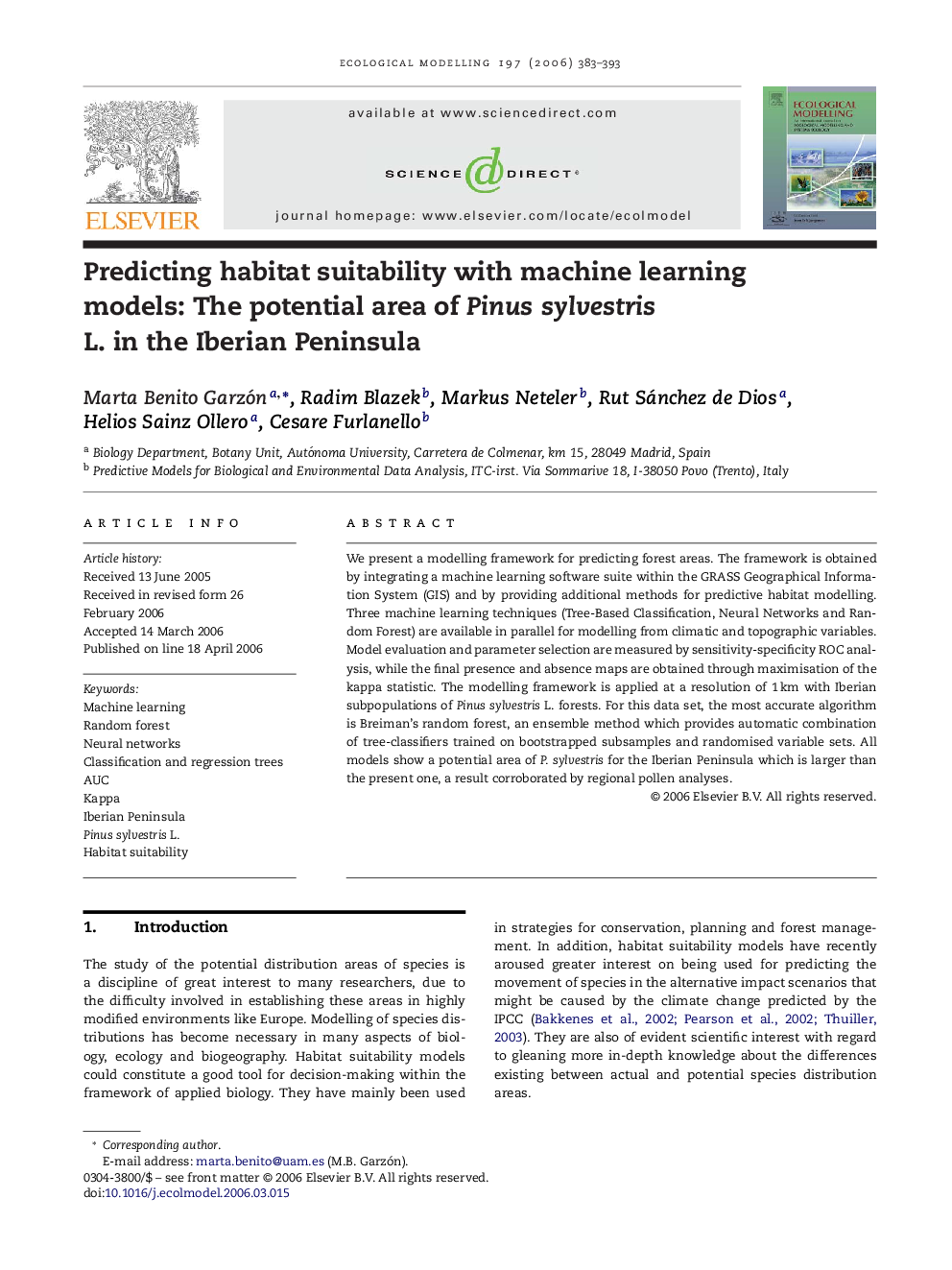| Article ID | Journal | Published Year | Pages | File Type |
|---|---|---|---|---|
| 4379218 | Ecological Modelling | 2006 | 11 Pages |
Abstract
We present a modelling framework for predicting forest areas. The framework is obtained by integrating a machine learning software suite within the GRASS Geographical Information System (GIS) and by providing additional methods for predictive habitat modelling. Three machine learning techniques (Tree-Based Classification, Neural Networks and Random Forest) are available in parallel for modelling from climatic and topographic variables. Model evaluation and parameter selection are measured by sensitivity-specificity ROC analysis, while the final presence and absence maps are obtained through maximisation of the kappa statistic. The modelling framework is applied at a resolution of 1Â km with Iberian subpopulations of Pinus sylvestris L. forests. For this data set, the most accurate algorithm is Breiman's random forest, an ensemble method which provides automatic combination of tree-classifiers trained on bootstrapped subsamples and randomised variable sets. All models show a potential area of P. sylvestris for the Iberian Peninsula which is larger than the present one, a result corroborated by regional pollen analyses.
Keywords
Related Topics
Life Sciences
Agricultural and Biological Sciences
Ecology, Evolution, Behavior and Systematics
Authors
Marta Benito Garzón, Radim Blazek, Markus Neteler, Rut Sánchez de Dios, Helios Sainz Ollero, Cesare Furlanello,
